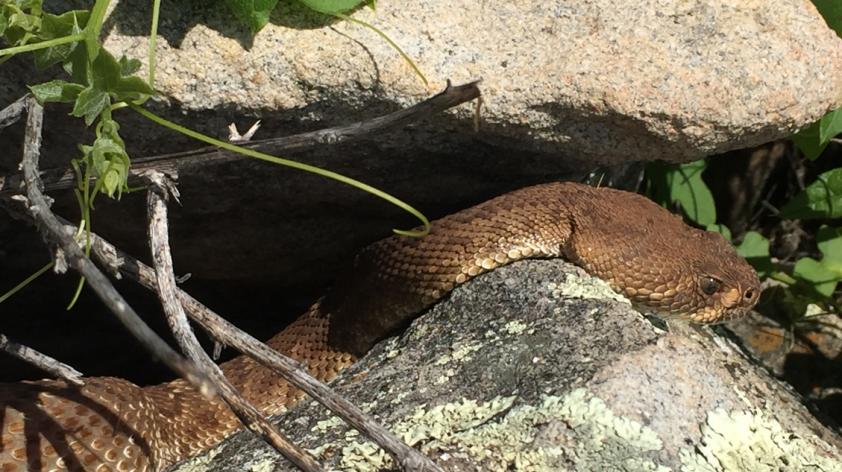
Of rocks and ruber
The Red-diamond rattlesnake (Crotalus ruber) is San Diego’s largest rattlesnake species, reaching up to nearly six feet in length. A protected species, this beautiful, brick-red, girthy creature is primarily found in the more undisturbed habitats of San Diego County, including: coastal sage scrub, chaparral and rocky areas of the desert. The black-and-white rings on the tail, located just above the rattle, distinguish this rattlesnake from our three other native rattlesnakes (Southern Pacific, Speckled, and Colorado desert sidewinder). In the early 2000’s, I was fortunate enough to study Red diamond rattlesnakes at the Safari Park Biodiversity Reserve (SPBR) using radio telemetry, and to this day I still see some of my old subjects. As a researcher it is often difficult to finalize a project when there is so much to learn about every animal we study. For years I have wondered many things about the Red diamond rattlesnake and my queries finally got the best of me earlier this year.
In February 2019, I teamed up with Natural Lands Manager, Dr. Charlie de la Rosa, to learn more about the Red diamond rattlesnakes in the SPBR. Our first order of business is to figure out the complexities of the rocky over-wintering sites the animals use. We are hoping to map out all the known over-wintering sites, or dens, in the SPBR so we can better understand the needs of these snakes. Dens are crucial to the winter survival of many snakes and it appears the Red-diamond rattlesnakes prefer a certain type of rock with certain spatial characteristics. Although snakes in San Diego don’t experience a true hibernation like many snakes in colder areas, they do need areas of protection to spend the cold winter nights, even though snakes may become active on any warm day during the year. Dens are important areas for snake social behaviors as well, such as male-male combat, reproduction, and birth. If we can find den sites and characterize the areas the snakes need to overwinter that may enable us to learn more about the social behaviors of this under-studied species. To date, Charlie and I have found 22 den sites in the SPBR and have covered over half the rocky target areas of the preserve. We are always careful not to disturb snakes at dens and only observe them from a distance. Disturbance at dens may alter the behavior of the snakes and keep them from returning to the dens.
We will continue our hikes among the rocks and ruber for several years and we hope to uncover some of the mysteries of these wonderful animals.
Photos by the author.













